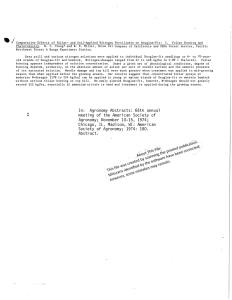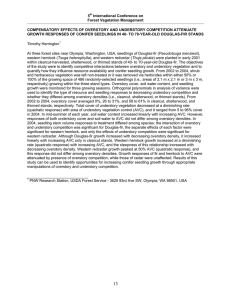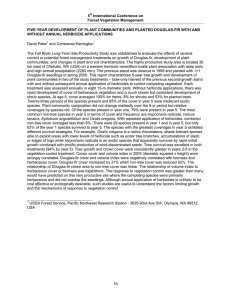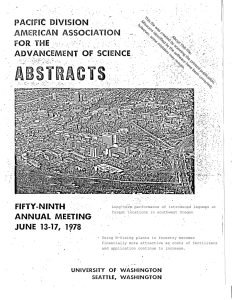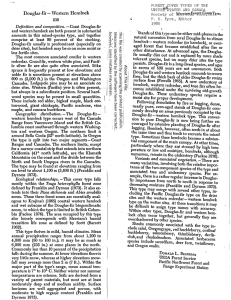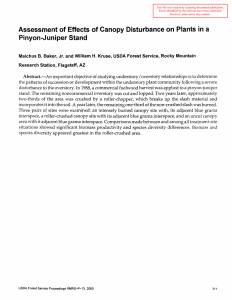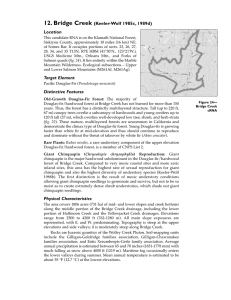Natural Regeneration in Thinned Douglas-fir Stands:
advertisement
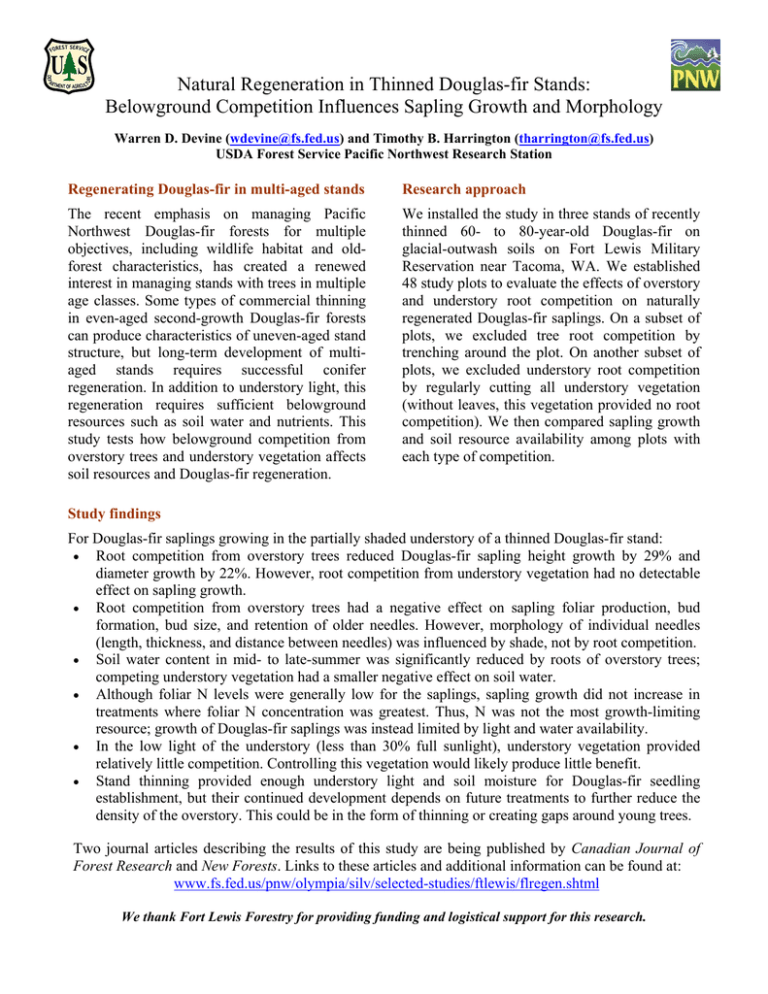
Natural Regeneration in Thinned Douglas-fir Stands: Belowground Competition Influences Sapling Growth and Morphology Warren D. Devine (wdevine@fs.fed.us) and Timothy B. Harrington (tharrington@fs.fed.us) USDA Forest Service Pacific Northwest Research Station Regenerating Douglas-fir in multi-aged stands Research approach The recent emphasis on managing Pacific Northwest Douglas-fir forests for multiple objectives, including wildlife habitat and oldforest characteristics, has created a renewed interest in managing stands with trees in multiple age classes. Some types of commercial thinning in even-aged second-growth Douglas-fir forests can produce characteristics of uneven-aged stand structure, but long-term development of multiaged stands requires successful conifer regeneration. In addition to understory light, this regeneration requires sufficient belowground resources such as soil water and nutrients. This study tests how belowground competition from overstory trees and understory vegetation affects soil resources and Douglas-fir regeneration. We installed the study in three stands of recently thinned 60- to 80-year-old Douglas-fir on glacial-outwash soils on Fort Lewis Military Reservation near Tacoma, WA. We established 48 study plots to evaluate the effects of overstory and understory root competition on naturally regenerated Douglas-fir saplings. On a subset of plots, we excluded tree root competition by trenching around the plot. On another subset of plots, we excluded understory root competition by regularly cutting all understory vegetation (without leaves, this vegetation provided no root competition). We then compared sapling growth and soil resource availability among plots with each type of competition. Study findings For Douglas-fir saplings growing in the partially shaded understory of a thinned Douglas-fir stand: • Root competition from overstory trees reduced Douglas-fir sapling height growth by 29% and diameter growth by 22%. However, root competition from understory vegetation had no detectable effect on sapling growth. • Root competition from overstory trees had a negative effect on sapling foliar production, bud formation, bud size, and retention of older needles. However, morphology of individual needles (length, thickness, and distance between needles) was influenced by shade, not by root competition. • Soil water content in mid- to late-summer was significantly reduced by roots of overstory trees; competing understory vegetation had a smaller negative effect on soil water. • Although foliar N levels were generally low for the saplings, sapling growth did not increase in treatments where foliar N concentration was greatest. Thus, N was not the most growth-limiting resource; growth of Douglas-fir saplings was instead limited by light and water availability. • In the low light of the understory (less than 30% full sunlight), understory vegetation provided relatively little competition. Controlling this vegetation would likely produce little benefit. • Stand thinning provided enough understory light and soil moisture for Douglas-fir seedling establishment, but their continued development depends on future treatments to further reduce the density of the overstory. This could be in the form of thinning or creating gaps around young trees. Two journal articles describing the results of this study are being published by Canadian Journal of Forest Research and New Forests. Links to these articles and additional information can be found at: www.fs.fed.us/pnw/olympia/silv/selected-studies/ftlewis/flregen.shtml We thank Fort Lewis Forestry for providing funding and logistical support for this research.
